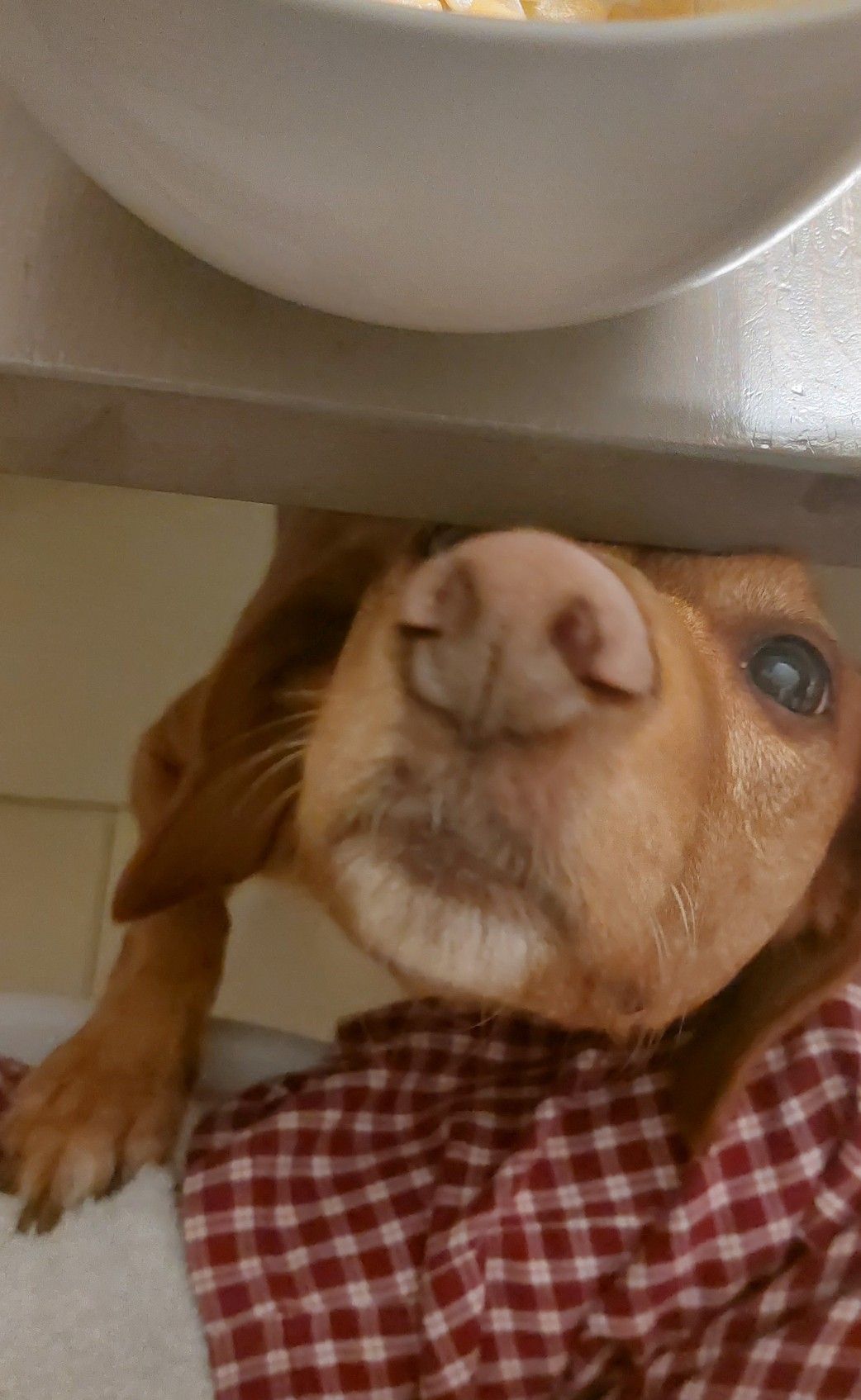Dog / Detail
Dogs and Tables: A Study in Canine Behavior
Jonathan Bennet | 20 September 2024 | 16:05
The behavior of dogs and cats often provides a fascinating contrast. While cats are known for their graceful leaps and comfortable perches on high surfaces, dogs frequently choose to accompany their owners beneath tables.
This seemingly simple act raises intriguing questions about canine behavior, instincts, and the influence of human interaction.
This article will explore the reasons why dogs tend to gravitate towards the under-table space, examining both innate instincts and the role of human training and conditioning.

Dogs, as pack animals, have an innate desire for proximity and companionship. The under-table space offers a sense of security and protection, similar to the den or cave-like environments that their ancestors would have sought out.
This instinctive behavior is often reinforced by the presence of the owner, who provides a source of warmth, comfort, and protection. Additionally, the under-table space can be seen as a lower-level, more grounded position, which may align with dogs' natural instincts as ground-dwelling creatures.

Human behavior plays a significant role in shaping canine behavior. If an owner frequently encourages their dog to sit or lie down under the table, the dog may learn to associate this behavior with positive reinforcement, such as treats or praise.
This condition can reinforce the dog's preference for the under-table space.
Furthermore, the owner's body language and tone of voice can influence the dog's behavior. If the owner appears relaxed and comfortable while sitting at the table, the dog may feel more inclined to join them in this space.

The size and breed of a dog can also influence their preference for under-table companionship. Smaller dogs may find the under-table space more comfortable and secure due to their size.
Additionally, breeds with a strong herding instinct, such as Border Collies, may be more likely to exhibit protective behaviors, such as staying close to their owner.

Individual Differences and Personality Traits
Just like humans, dogs have unique personalities and preferences. Some dogs may naturally be more independent and less inclined to seek out close proximity to their owners. Others may be more clingy and crave constant companionship.
These individual differences can influence a dog's behavior around tables and other furniture.

While instinctual behaviors play a significant role in shaping canine behavior, training and conditioning can also influence a dog's preference for the under-table space.
Positive reinforcement techniques can be used to encourage or discourage this behavior. For example, if an owner wants their dog to stay under the table during mealtimes, they can reward the dog for staying in place.
Conversely, if an owner prefers their dog to sit on a designated mat, they can redirect the dog's attention and reward them for staying in that location.

The reasons why dogs tend to gravitate towards the under-table space are complex and multifaceted. Instinctive behaviors, social cues, size and breed considerations, individual differences, and training and conditioning all play a role in shaping this canine behavior. By understanding these factors, dog owners can gain a deeper appreciation for their pets' unique personalities and preferences.
Related
-

The Healing Power of Dogs: How Canine Therapy is Revolutionizing Mental Health and Boosting Positive Energy in Humans
Dog14 November 2024
-

A Pawsitive History: Dogs of Nuremberg
Dog09 November 2024
-

The Role of Oxytocin in the Human-Dog Bond: The Science Behind Our Deep Connection
Dog06 November 2024
-

Beyond the Beach: Jamaica's Dog Lovers
Dog29 October 2024
-

A Dog's Delights: Homemade Snacks for Our Furry Babies, Recipes Included!
Dog29 October 2024
-

A Dog's Disorientation: Understanding Your Dogs' Wanderlust
Dog29 October 2024
Popular
-

-

A Pawsitive History: Dogs of Nuremberg
09 November 2024 -

-

Beyond the Beach: Jamaica's Dog Lovers
29 October 2024 -
